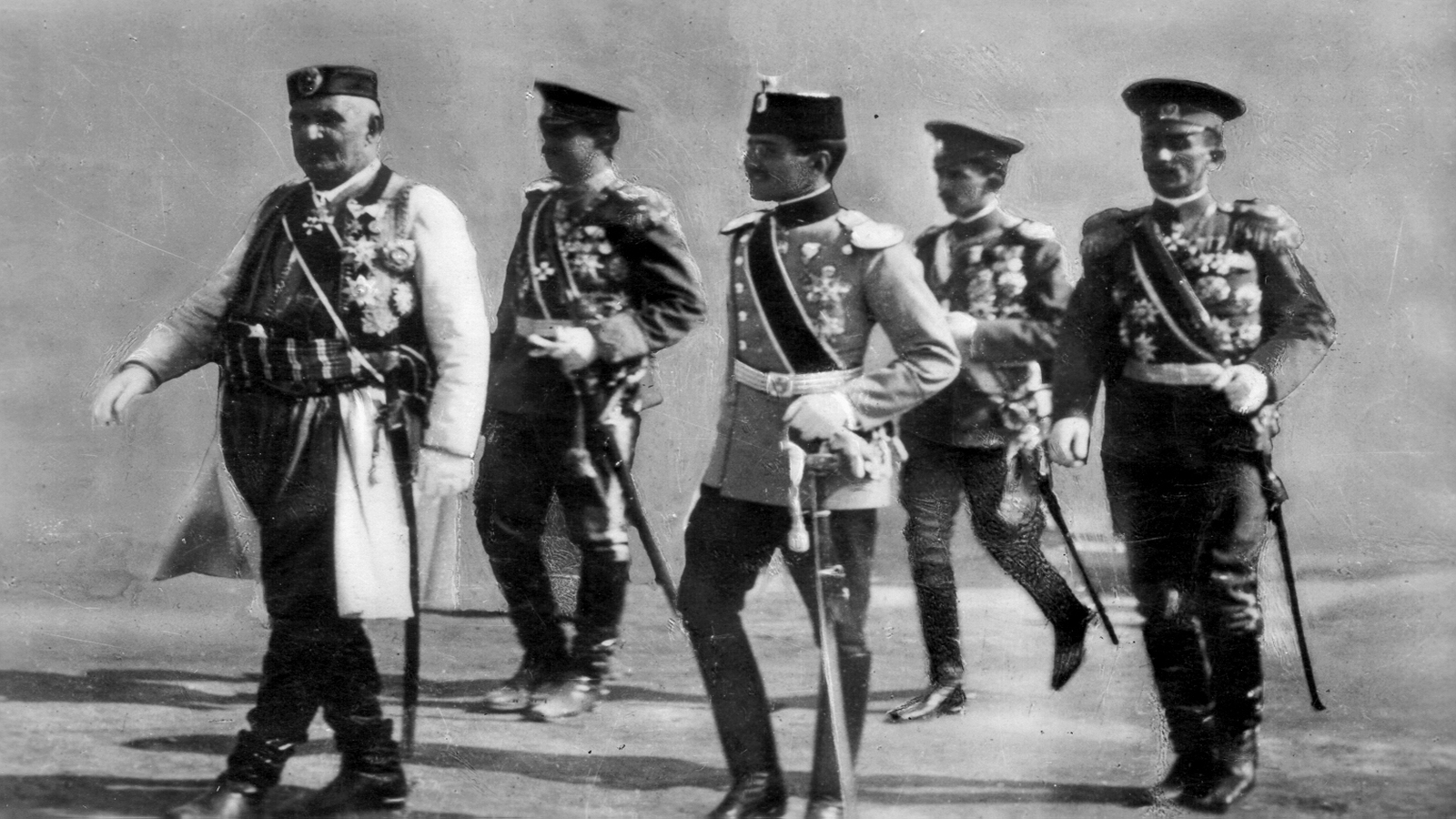Nikola I Petrović-Njegoš (King Nikola) was born in Njeguši, a child of the Petrović dynasty. He was sent to France to become educated and while there his uncle, Danilo I, was assassinated. Since his uncle had no male offspring Prince Nikola succeeded him as prince in August 1860. A few months later he married Milena Vukotic. Together they had 12 children, 9 girls and 3 boys. Several of their children went on to marry royalty themselves of which examples are Princess Ljubica, known as Zorka, who married Prince Petar Karadjordjevic, who later became the King of Serbia. Princess Milica who married Grand Duke Peter Nicolaevich Romanov of Russia. Princess Anastasija’s second marriage was to the Grand Duke Nicholas Nicolaevich of Russia. Princess Jelena married the crown-prince Victor Emmanuel III de Savoie who became the King of Italy in 1900 and Princess Ana married the Prince of Battenberg, Francis Joseph von Battenberg.
Prince Nikola undertook many journeys to foreign countries and became friendly with the Tsar of Russia, Alexander II. Having the Russian imperial family on his side helped Montenegro immensely in revolts and skirmishes and also in terms of wealth.
In 1876 he declared war on Turkey and the result of this war was that the land belonging to Montenegro was expanded considerably. In 1878 Montenegro was recognized as an independent country by the Congress of Berlin and following this there were decades of peace and prosperity in Montenegro.
Nikola I Petrović-Njegoš created Montenegro’s constitution in 1905 and gave it a western style criminal law and press freedom. He also created Montenegro’s first currency, the perper on which his bust appears. In August 1910 during the celebration of his golden jubilee he assumed the title of King.
He also played a vital role in the cultural history of Montenegro by establishing schools, theaters, libraries and museums.
In 1918, at the end of World War I, a meeting of largely Serbian members voted to depose King Nikola and to annex Montenegro. This resulted in Montenegro losing its status as an independent country. King Nikola who had been in exile since 1916 was never allowed to return and remained in exile until his death. On the 1st of October 1989 the remains of the royal couple and two of their daughters were transferred back to Montenegro and buried in the Chapel of Cipur in Cetinje.
Today part of the National Museum of Montenegro in Cetinje is the former residence of King Nikola. This residence was renovated and changed over time but the final construction was completed in time for the celebration of his Golden Jubilee in 1910. This building was formally turned into a museum in 1926. The interior pieces were obtained from the Military museum and the National museum and other institutions that were established in order to preserve the collections of the Montenegrin dynasties.


